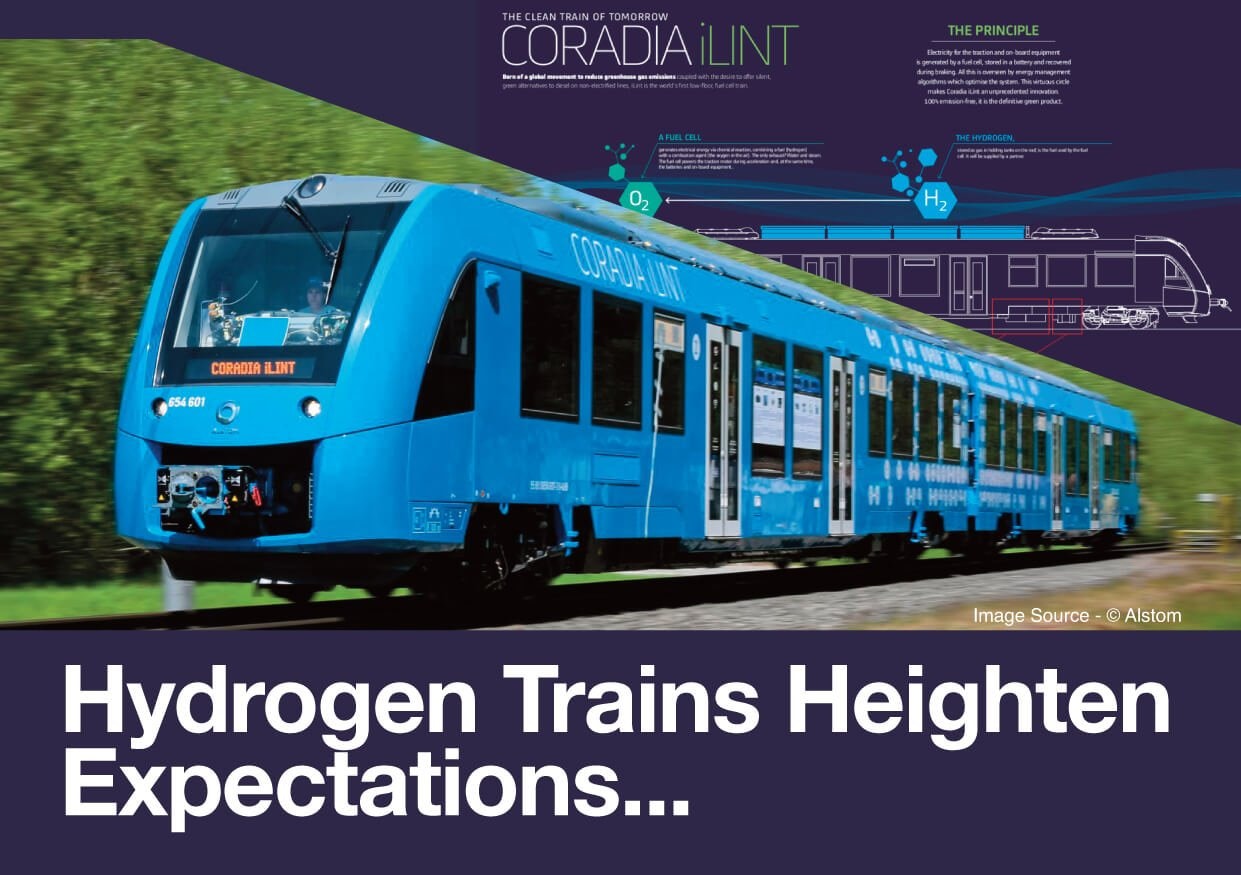Hydrogen Trains Heighten Expectations
Hydrail – rail vehicles which use hydrogen as an energy source – is the innovation set to transform public transport across the globe.
French company Alstom manufactured the first hydrogen trains; Coradia iLint to be used commercially to transport passengers. The iLint prototype was originally tested in Salzgitter March 2017 and the trains, with roof-mounted hydrogen tanks, are now in use on a 62 mile stretch of rail in northern Germany. Following this success, the French government aims to have a hydrogen train on the railway by 2022 and many European countries are expected to follow suit.
The process of converting hydrogen to electrical energy involves supplying hydrogen to the fuel cell where it is combined with oxygen. This chemical reaction results in two products; electricity and water. The water is emitted as steam whilst the electricity produced can be utilised to fuel the electrical traction drive which essentially moves the train. Any additional electrical energy can be stored in lithium-ion batteries, thus reducing wasted energy.
Since September this year, passengers on the Cuxhaven, Bremerhaven, Bremervörde and Bextehude line are travelling onboard the first two-carriage hydrogen trains in commercial use. Gian Luca Erbacci, Alstom’s Senior Vice President commented: “For the first time worldwide, a hydrogen-fuelled passenger regional train will replace diesel trains, generating zero emissions with the same performance as a regular train.” Alstom intend to roll out another 14 Coradia iLint trains to Lower Saxony by 2021 and are currently working with Eversholt Rail to convert Class 321 trains to hydrogen powered rail vehicles, meaning we could see hydrogen trains in the UK within the next 3 years.
Hydrogen trains have not officially been approved for use in the UK, but the technology is already in use in conjunction with other railway projects. Hydrogen powered fuel cell lighting is enabling work to go ahead on the HS2 project without causing excessive noise pollution. Furthermore, in September a project called Hydro Flex – a collaboration between leasing company Porterbrook and the University of Birmingham’s Centre for Railway Research and Education – was announced. Dr Stuart Hillmansen, Senior Lecturer in Railway Systems, stated “Hydrogen powered trains offer a cleaner alternative to current diesel trains and this project demonstrates the opportunities and value of innovation in the rail industry.” Porterbrook will provide ex-Thameslink Class 319 25kV 50Hz/750 DC, which will be adapted to run on hydrogen power and act as a prototype train in the UK to demonstrate the use of hydrogen fuel cells.
Electrification will most likely remain the standard approach in the UK especially for inter-city routes. However, if the UK government intend to meet their target of decommissioning all diesel rail vehicles by 2040 then a third of UK trains will need replacing or upgrading and hydrogen could, in the long run, be the cost effective and sustainable solution.
